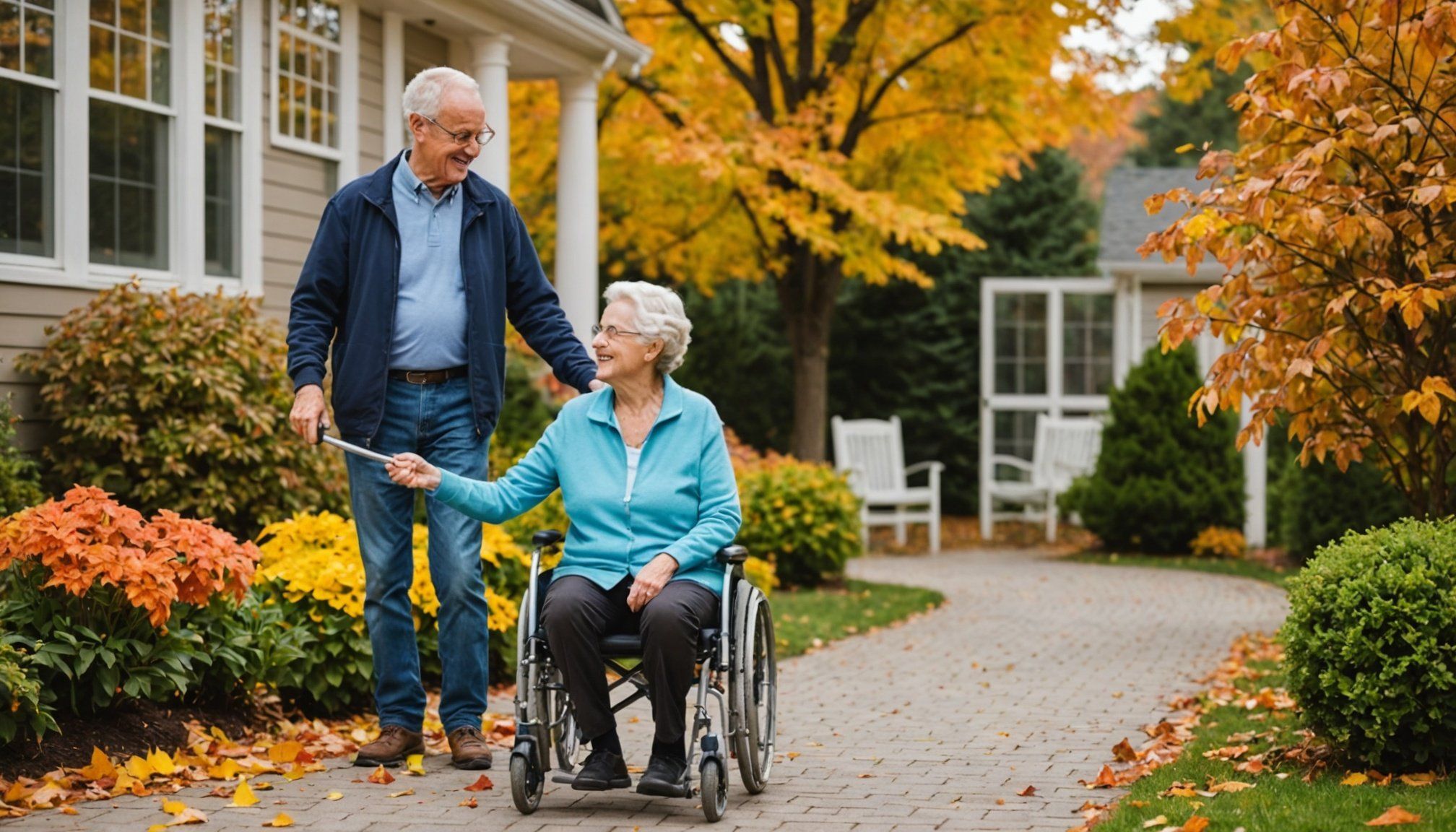As we age, the risks associated with falls in the home can increase significantly. For seniors, the implications of a fall can be serious, leading to injuries that may hinder mobility and independence. Therefore, understanding how to create a fall-proof home environment is essential for enhancing safety and ensuring a secure living space. This guide provides valuable insights into assessing your home for hazards, making necessary adjustments, and utilizing tools that can help reduce the risk of slips and falls.
Assessing Your Home for Hazards
The first step in creating a fall-proof home is to conduct a thorough assessment of your living environment. This means identifying potential hazards that could lead to an accident. Begin by walking through each room and looking for areas that might pose a risk, especially in high-traffic zones such as hallways, kitchens, and bathrooms.
Consider the flooring in your home. If you have loose rugs or carpets, they can easily become tripping points. Secure them with double-sided tape or remove them altogether to create a smoother walking surface. In addition, examine the lighting throughout your home. Poorly lit areas can increase the risk of accidents; ensure that every room is well-lit. Replace burnt-out bulbs and consider adding night lights in hallways and bathrooms for visibility during the night.
Another area to review is the placement of furniture and belongings. Ensure that pathways are clear of any clutter, such as books or shoes, that could easily be stumbled over. It’s also helpful to keep frequently used items within easy reach to avoid the need for climbing on stools or reaching into high cupboards.
Finally, assess the bathroom, which is often a site of slips. Installing grab bars near the toilet and in the shower can provide essential support. Non-slip mats can also help prevent falls when stepping out of the shower or tub. By carefully examining your space, you can identify and address many potential hazards, creating a safer environment for yourself and ensuring peace of mind.
Enhancing Balance and Mobility
Improving balance and mobility is essential for seniors aiming to reduce their risk of falling. Various strategies can be employed to enhance these physical attributes, thus promoting independence in daily activities.
First, consider engaging in regular exercise that focuses on strength, balance, and flexibility. Activities such as tai chi, yoga, or even simple stretching exercises can significantly improve stability. Many community centers offer classes specifically designed for older adults, providing a social aspect to fitness that can enhance motivation and enjoyment. Consult with a healthcare professional or physical therapist to develop a tailored exercise program that meets your individual needs and capabilities.
In addition to exercise, consider utilizing assistive devices if necessary. Canes, walkers, or grab bars can provide additional support for those who may feel unsteady on their feet. When using these devices, ensure they are properly fitted and maintained. Speak with a healthcare provider to determine the most suitable option for your balance and mobility challenges.
It’s also beneficial to practice proper footwear. Shoes should fit well and provide adequate grip. Avoid slippers or open-toed shoes that may not provide sufficient support. A sturdy pair of shoes can make a significant difference in maintaining balance throughout the day.
By prioritizing physical health and safety through these methods, you not only reduce the risk of falls but also improve your overall quality of life, empowering you to navigate your home with greater ease.
Creating a Safer Bathroom Environment
The bathroom can be one of the most hazardous areas of the home for seniors. Water creates a slippery surface, making falls more likely. Therefore, taking steps to create a safer bathroom environment is vital in preventing accidents.
Begin with the installation of grab bars near the toilet and in the shower or bathtub. These provide essential support when transitioning between sitting and standing positions, making it easier to maintain stability. It’s crucial to ensure that these bars are securely fastened to the wall and can support your weight.
Next, consider adding non-slip mats or decals in the tub and on the floor. These can significantly enhance grip and reduce the risk of slipping when wet. Additionally, using a shower chair can be a wise choice if standing for long periods is challenging. This allows you to maintain your independence while ensuring safety during bathing.
Adjusting the height of the toilet can also be beneficial. Elevated toilet seats reduce the effort needed to sit down and stand back up, making the process easier and safer. Furthermore, a handheld showerhead can provide flexibility and allow for easier washing without the need to stand in the tub.
Lastly, ensure that all necessary items such as soap, shampoo, and towels are within easy reach. Avoid bending or stretching to grab these items to prevent any balance issues. By taking these precautions, you can create a safer bathing environment that minimizes the risk of falls.
Implementing Technology for Safety
In today’s world, technology plays a significant role in enhancing the safety of older adults. Smart devices can be invaluable in preventing falls and ensuring immediate assistance when needed. Implementing such technology can add an extra layer of security in your home.
One of the most effective technologies is a medical alert system. These systems allow you to call for help with the push of a button, providing peace of mind whether you’re at home or on the go. Many modern systems include fall detection features, automatically alerting emergency services if a fall is detected, even if you’re unable to press the button.
Smart home devices can also contribute to safety. For instance, smart lights can be programmed to turn on automatically when you enter a room, reducing the risk of falls in poorly lit areas. Additionally, using smart speakers can allow you to control lights, thermostats, and other devices with voice commands, minimizing the need for physical movement.
There are also apps available that can help monitor your physical activity and health. Some applications offer reminders for medication, hydration, and exercise, helping you maintain a routine that is essential for physical well-being.
Lastly, consider using security cameras or motion sensors around your home. These can alert you to unusual activity or falls, providing extra reassurance if you live alone. By integrating technology into your daily life, you can significantly enhance your safety and independence in your home.
Conclusion: Embracing Safety and Independence
Creating a fall-proof home environment is an essential step for seniors looking to maintain their health and independence. By assessing your living space for hazards, enhancing balance and mobility, making necessary adjustments in the bathroom, and implementing technology, you can greatly reduce the risk of falls.
These efforts not only provide safety but also foster a greater sense of security and independence, allowing you to enjoy life fully within your home. Remember that prevention is key; small changes can create significant impacts. Embrace these strategies and empower yourself to live confidently and safely, knowing that your home environment supports your well-being.











